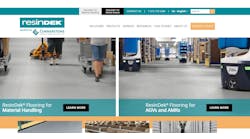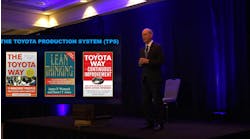Manufacturing's Big Rethink: A Shift in Approaches, Attitudes, Investments
Manufacturers are going through a fundamental rethink of their supply chain structures and long-term talent development plans as they look toward a post-COVID future. There is also a structural shift in priorities, attitudes and investments related to environmental consciousness. While ongoing inflation pains will hopefully stabilize as supply-chain capacity issues ease and the federal interest rate hikes work their way through the system, these structural shifts in the manufacturing sector, accelerated by the pandemic, may contribute to inflation in the mid- to longer term.
Technological advancements and demographic shifts may serve as deflationary forces eventually, but in the meantime, companies have to prepare themselves for the inflationary impact of these shifts that are currently in motion.
Reshoring
With supply chain disruptions across the United States, Europe and Asia, companies have had rough times trying to access material, ship product and manage inflated material and shipping costs. Starting in 2018 with the U.S-China tariff war and accelerated by the pandemic, there has been a huge push toward reshoring. More than 90% of manufacturing executives and CEOs have a reshoring or nearshoring target for the near future, with 80% focused on reshoring rather than nearshoring, according to the Kearney 2021 Reshoring Index. Alongside diversifying suppliers away from Asia and exploring the development of a domestic supplier base, manufacturers are now evaluating total cost per piece—which factors in supply chain risks of having a product manufactured in an offshore location—rather than just manufacturing and freight cost per piece. They are also reevaluating the applicability of lean, just-in-time and other inventory approaches with geographical strategies of where to make/sell.
There is also a strategic push by the U.S. government to bring back critical supply chains for semiconductors, electric vehicles and pharmaceuticals. While these initiatives will take a few years to yield results, the focus on reshoring will have a longer-term inflationary impact given that “Made in America” products cost a premium. If reshoring investments were to happen as envisaged, companies, customers and the economy as a whole may just have to adapt to the new normal of higher prices.
Environmental Consciousness
The global push toward a green economy emphasized through carbon neutrality goals, investor mandates and customer consciousness is driving prices of green metals and materials to record highs. Countries and companies are racing to procure supplies of nickel, lithium and other such metals to ensure continuity of supply and build self-sufficient battery supply chains. Companies are redesigning products to incorporate metals such as aluminum to make products lighter, incorporating recycled plastic instead of virgin plastic to improve their ESG profiles, and electrifying their manufacturing processes.
The push for combatting climate change is not going away any time soon and will ensure that prices for metals and materials that help organizations achieve green objectives will continue to rise. Lead times for these minerals and metals are long, operations are extremely capital intensive and supply chains are plagued with bottlenecks, not to mention the fact that many of these metals are mined in nations which are vulnerable to political conflicts impacting their supplies, making it difficult (though not impossible) for supply to keep pace with demand.
Talent Shortage
Talent gaps in manufacturing are not new, but the recent and more acute labor shortages due to competition from other industries and the accelerated retirement of workers above 55 years old have emphasized the fact that even if current manufacturing employment levels return to pre-pandemic levels, there will yet be an overall decline in longer-term labor availability for the industry. Manufacturers also have a tough time attracting younger workers to join their teams, adding another challenge to the mix.
There is a general decline in U.S. population growth with a gradual decline in the workforce entering the economy. Increasingly, people are adopting non-traditional working models that prioritize life experiences over work—empowered by the “you only live once” attitude. Automation and technology may be a solution to some of these workforce challenges, but companies will need more engineers to oversee automated operations. Manufacturing will need to compete for talent with other sectors, since technological transformation and digitization is pervasive across all industries. Inflated wages, currently in place, will likely remain, since wage increases, once introduced, generally cannot be rolled back. While this may be the baseline now, longer-term talent gaps will continue to be an inflationary force.
Increased Regulation
The extent of regulations governments are introducing to address various political, privacy and environmental issues without retiring archaic and ineffective regulations continues to put an onerous burden on manufacturing companies. Recent maritime law changes, for instance, mandated the use of low-sulfur fuel to be environmentally friendly—resulting in low-sulfur surcharges to customers. Importing products made with virgin plastics into certain countries (e.g., the United Kingdom) requires the exporter/manufacturer to pay plastic packaging taxes. Trading with politically sensitive countries effectively requires manufacturers to rebuild or reroute their supply chains. Globally coordinated proposed tax laws will require additional compliance for manufacturers operating outside the United States.
While these may be issues that need to be regulated, it doesn’t make them any less burdensome and expensive. A 2016 Small Business Regulation Study by the U.S. Chamber of Commerce indicated that over the last 60 years, the federal regulatory code increased by 850%. The agencies issuing these rules calculated that regulatory cost burdens—such as compliance, paperwork, and conversion costs—were nearly $4.9 billion per year to the affected industries. Complying with increasing regulations requires companies to put in more investments into resources and operational changes—the cost of which will be passed on to the customer.
Technology as a Solution
Accelerated by the pandemic, companies of all sizes have ramped up their investments in automation and technology solutions to enable automated operations, remote working, and productivity enhancing investments. What was a slow adoption prior to COVID-19 has accelerated over the last two years.
Technology is deflationary. It can increase the scale of production efficiency, driving down product and labor costs. It can help better manage supply chains, environmental and regulatory compliance by tracking real-time data, automating processes, streamlining operations and increasing speed and efficiency. Technology-enabled commerce also increases price transparency because customers can compare prices of any product with information available at their fingertips, forcing companies to price more competitively.
The pandemic has accelerated online business-to-business sales, which will further continue and could very well become the norm. McKinsey & Co. reports that about 65% of B2B companies across industries are fully transacting online in 2022. And for the first time, B2Bs are more likely to offer e-commerce options over in-person sales. This direct selling to customers will remove a lot of intermediary costs, driving down prices.
Technology may be the proverbial silver bullet that balances the above inflationary forces, but the speed of adoption and the extent and depth of adoption remains to be seen.
Taking Action
Manufacturers should evaluate all aspects of their operations and the inflationary shifts that they are most susceptible to. While these are broad industry shifts fueling inflation, companies can do their bit to prepare themselves. Such efforts include collaboratively investing in supplier development, building their domestic supplier base and entering into future supply agreements, while keeping in mind variability in supply and prices. Companies should also make sure they are investing in the right level of technology in the right areas to bridge talent gaps, but also providing training and more career-enhancing opportunities to their existing workforce. It is also critical that manufacturers carefully analyze the cost and benefits of their ESG strategies and intentionally incorporate those strategies throughout their business, rather than applying them as an afterthought or an undesirable requirement.
Technology can change the game by driving down inefficiencies in business processes, improving real-time decision-making and accelerating speed to market. Harnessing technology in these areas can reduce wasteful, unnecessary and ineffective costs and investments, and position organizations better to handle inflation now and in the longer term.
Shruti Gupta has more than 15 years of experience advising multinational clients on their transfer pricing planning, supply chain structuring, global compliance and controversy management strategies. She is a senior analyst in RSM’s Industry Eminence Program, which positions its analysts to understand, forecast and communicate economic, business and technology trends shaping the industries RSM serves.



